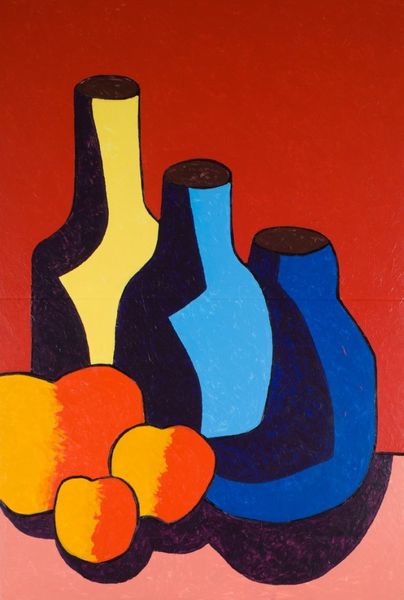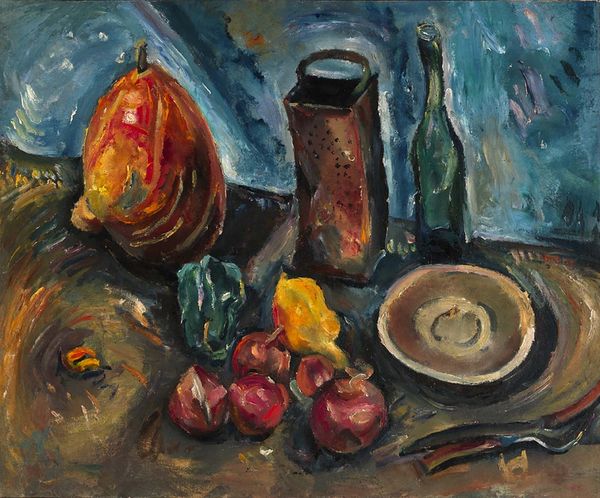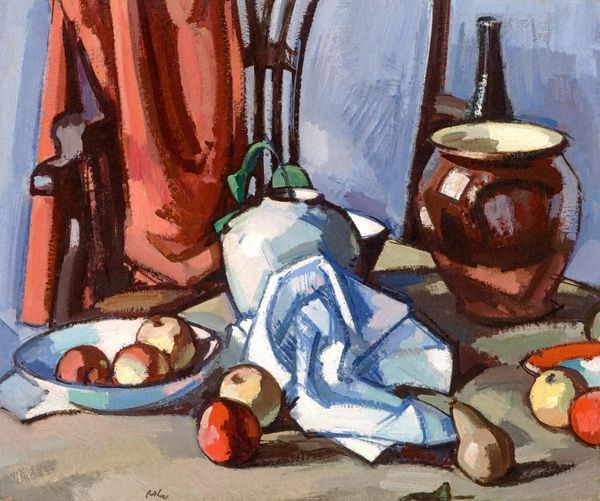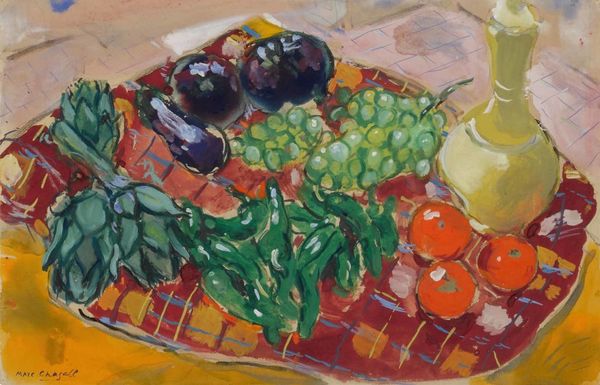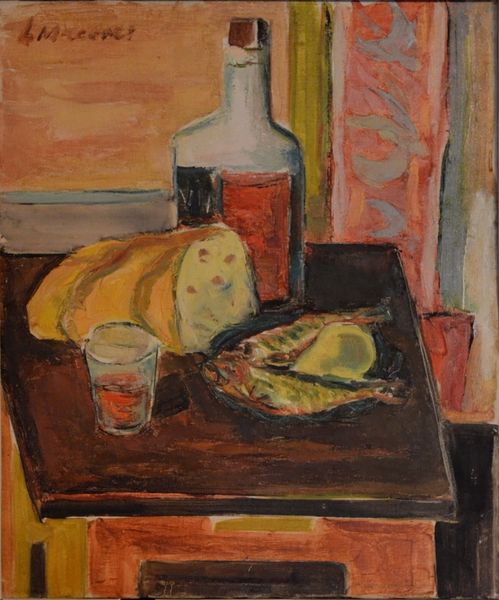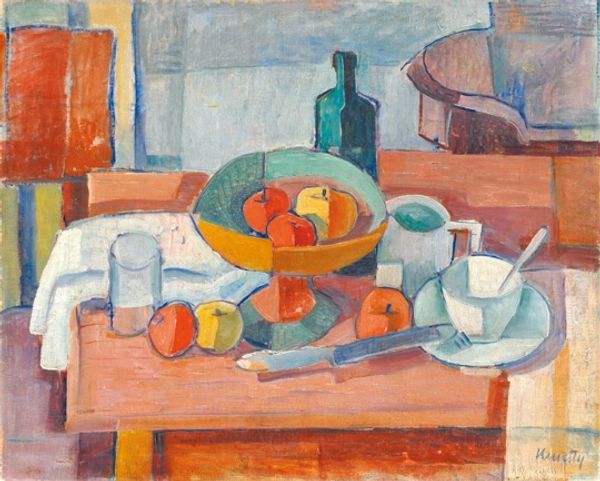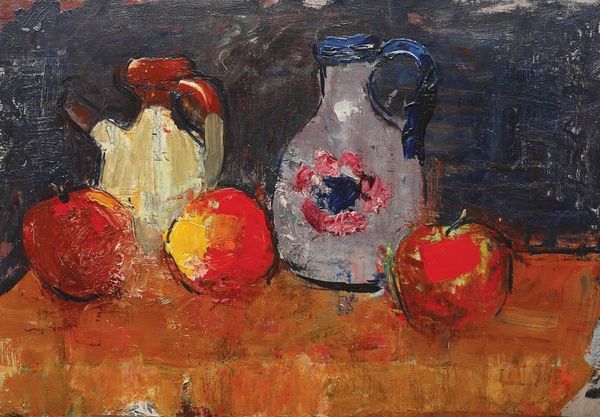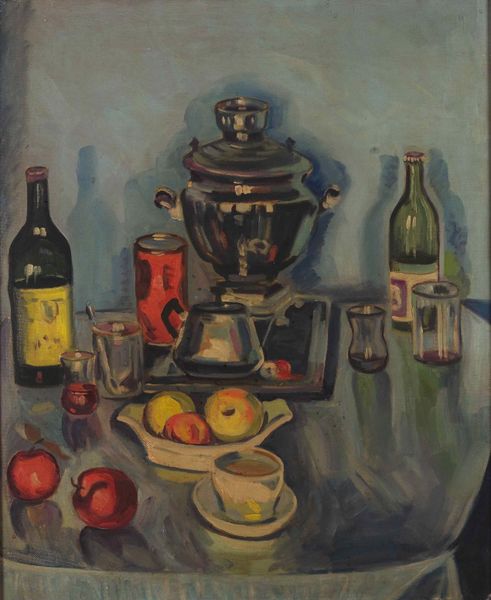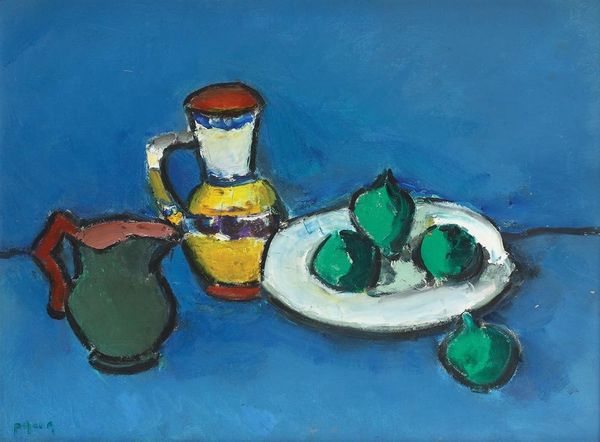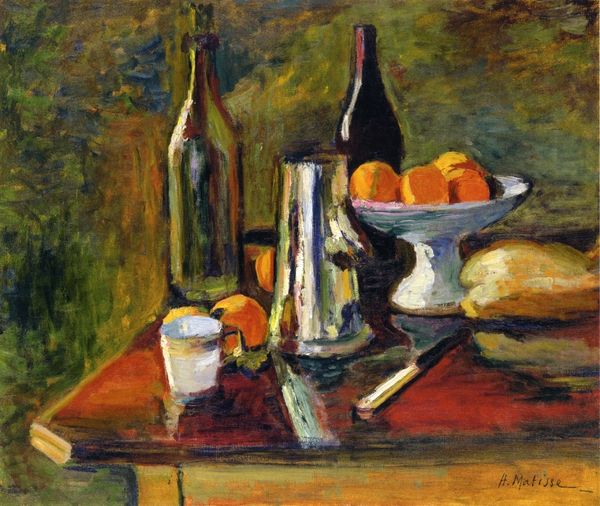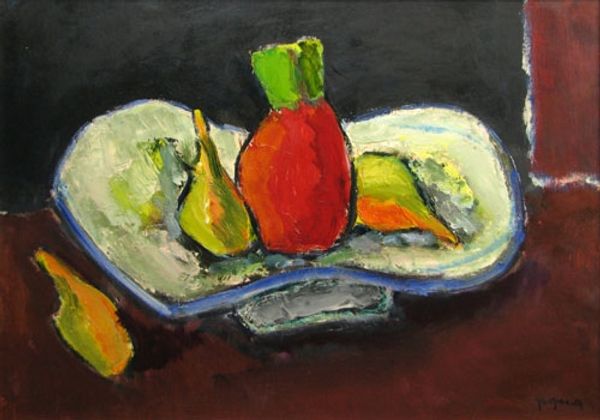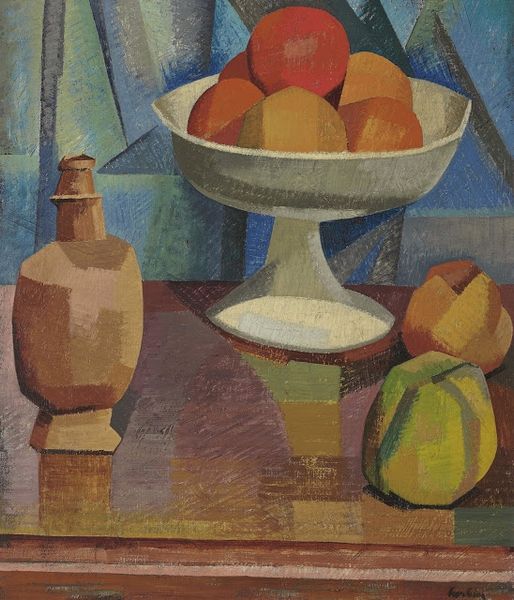
Copyright: William H. Johnson,Fair Use
Editor: This is William H. Johnson’s "Still Life--Fruit, Bottles" from 1939, rendered with oil paint. The vivid colors and simplified forms give it a cheerful, almost childlike quality, yet the composition feels quite deliberate. What do you see in this piece? Curator: It sings, doesn't it? Johnson's use of bold, unmodulated color and simplified shapes definitely leans into a playful vibe. I see him wrestling with modernism. Notice the almost Fauvist application of color—the arbitrary hues he throws down, a blue bottle with yellow accents, the bold reds and oranges, are all emotional choices more than representational. It is as if the colors have become unanchored, joyous! What is so intriguing is the naivete fighting to be seen. Editor: Yes, it’s like he’s deliberately ignoring conventional techniques. What’s he trying to say by flattening everything so much? Curator: I believe he's getting to the essence of things! There’s a sense of distilling form and color to their most basic, powerful elements. Think about folk art, where symbols and simplified forms communicate complex ideas. It's not about precise depiction, it's about communicating a feeling. The scene almost dissolves into shape! Do you see that, too? Editor: Absolutely! I get it. So it’s less about how accurately he paints the fruit and bottles, and more about how they make us feel. Curator: Precisely! And isn’t it wonderfully alive because of it? I believe there is such a wonderful sense of personal and artistic freedom, wouldn't you agree? Editor: I see that so differently now. It’s way more than just a colorful still life. Curator: Art isn't just what meets the eye, and our reaction becomes a conversation through our own perceptions. It keeps you coming back, that dialogue, right? Editor: Totally, now I feel like grabbing my brushes. Thanks for helping me look deeper!
Comments
No comments
Be the first to comment and join the conversation on the ultimate creative platform.
